Alongside Kamala, Black Women in the Art World Take the Lead
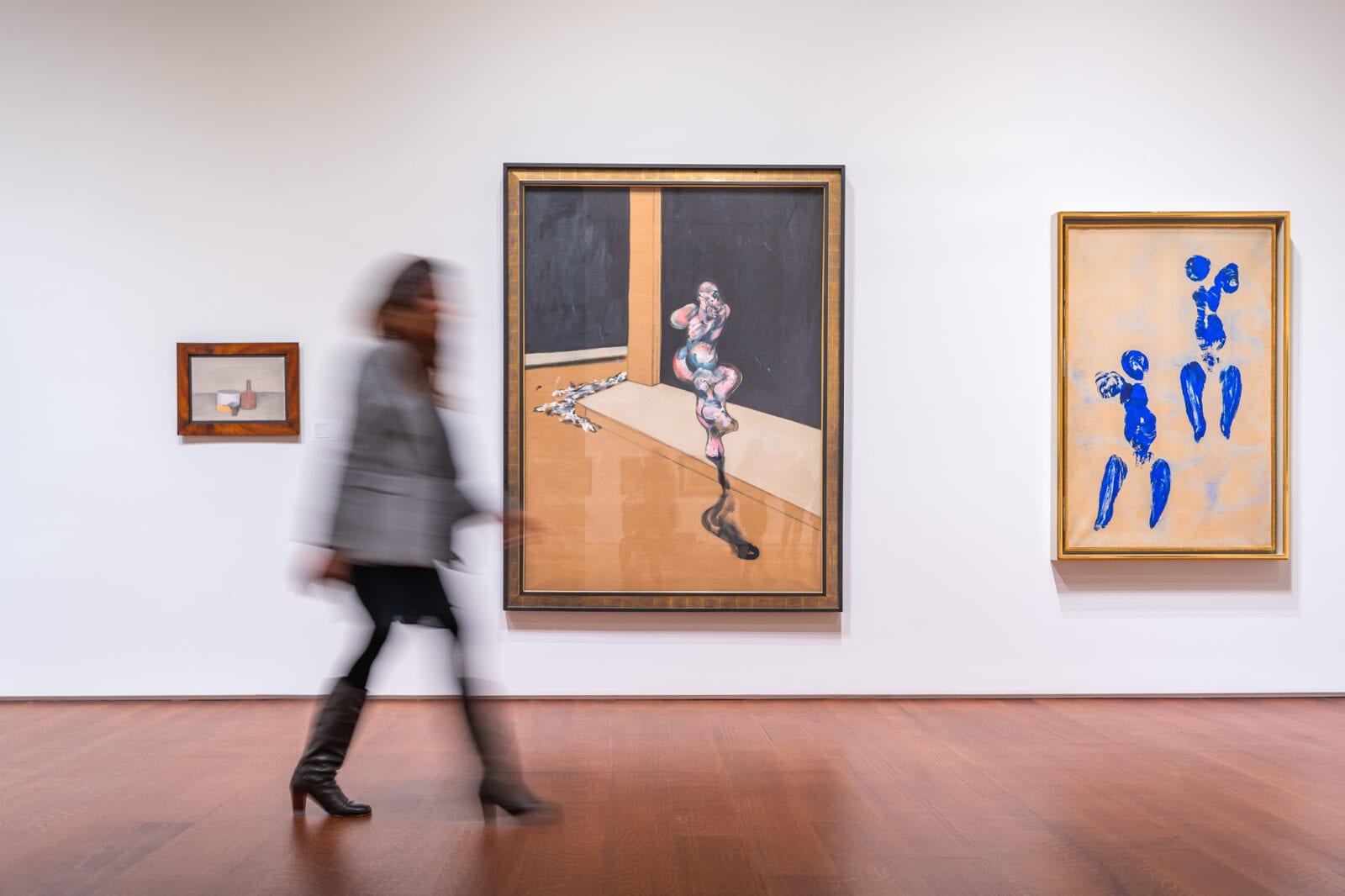
As Kamala Harris settles into the White House, we celebrate female leadership and Black History Month. Women around the world are stepping into their power, and Harris’s election as the first female and first Black female VP in American History is a symbolic milestone after a period of widespread disillusionment throughout a socially-polarizing former administration. This month we sat down with three power women: Isolde Brielmaier, Melanie Brister, and Destinee Ross-Sutton to discuss the significance of this year’s Black History Month themes, including representation, as well as finding personal power and purpose as Black women in fine art.
Isolde Brielmaier, Curator-at-Large, ICP
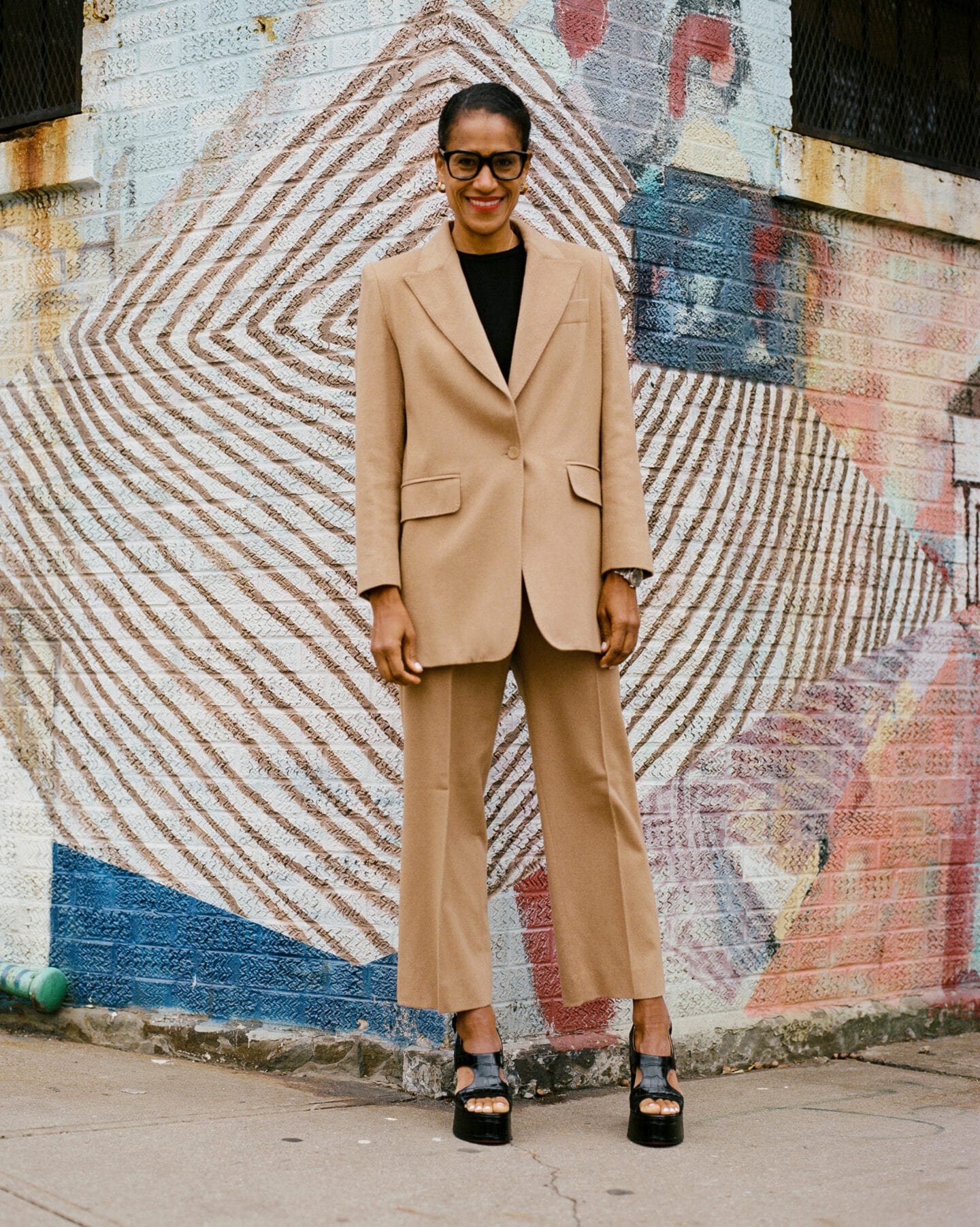
On Family and Inheriting the Arts:
“I grew up in Seattle in a tight knit family of four. But my family more broadly comes from around the world – Africa, Europe and the U.S. I have been really fortunate from a very young age to have been able to travel and to visit family in these places and to experience so many different ways of being and doing. This has definitely informed my world view and how I see myself and how I move through life. My parents were very keen on making sure my brother and I had as many diverse experiences as possible – this is what keeps the mind and the heart open they used to say – and this very much included the arts. I just remember my childhood feeling very creative and artistic and open… Seattle had a great theater scene, great music, museums, opera, etc. I saw African Dance by Ewajo and almost every Shakespeare play at what was then called the Poncho Theater for kids. And probably above all, I was a dancer…from the ages of 7 through my teens, I grew up in the world of Pacific Northwest Ballet (PNB) and I danced there in the school as well as in performances of Swan Lake, the Nutcracker, and many Balanchine ballets until I left Seattle for NYC where I continued to dance. Ballet and modern. Dance really shaped my life early on.”
On Passion Meeting Purpose:
“I have always been deeply involved in the arts and when I moved on from my life in dance I started working in museums in NYC and with living artists – I’ve always had artists – dancers, visual artists, musicians, etc as friends. I led tours for a range of different audiences and there was something about bringing art – these seemingly still contemporary artworks – to life that was incredibly rewarding. I think that my experience as a dancer has undoubtedly influenced my love of contemporary art and how I think about the audience and creating different contexts to reach people. Engagement is so important – it’s so critical to consider the ways that art can inspire and move people and allow them to dream.”
On Personal Creative Influences:
“There are so many people who inspire me, but I can start with my family and of course my friends – my chosen sisters – who inspire me every day. My special trio: Tanya Selvaratnam, Farai Chideya and Danzy Senna…they motivate me each and every day in their quest to be true to themselves and to create, contribute and impact. Jennifer Friedman, a crusader for survivors of domestic violence, Tamara Warren, writer and entrepreneur, Stacie Henderson who is committed to diversifying fashion and tech. And then there are so many artist friends of mine whom I remain in awe of – Xaivera Simmons, Wangechi Mutu, Toyin Odutola, Zoe Buckman. My students are a huge source of inspiration and they always keep me on my toes. They keep me current. And last but not least I must mention my dear daughter – she inspires me every day to live with joy and purpose. And she reminds me to “stay in the now” – to be present.”
On the Importance of Curators:
“So much of curating is about working collaboratively and creatively with artists to create a platform that honors their vision in a way that also offers as many entry points for as many different people as possible…Curators are important because they play a role in how art and visual culture is seen. They have to power to participate in the visual truth telling that so many artists maintain implicitly and explicitly as a part of their practice.”
On Black Photographers and the ICP:
“I am Curator at Large at the International Center of Photography and part of my role is to think about new artists and new audiences. How can we open up ICP to more people both in the U.S. and abroad. It is very exciting to think about all of the possibilities…there are so many image-makers whose work I love….a few of the younger ones include: Andrew Tshabangu, Miles Loftin, Shaniqwa Jarvis, Prince Gyasi.”
The Power of Being a Black Woman:
“I do think about the power of Black women and the ways in which we achieve, create, support and take care of one another and dare I say, everybody else! I would love to remind my younger self of this! I would remind her not to worry so much, to stay true to herself and always know that she has an army of women looking out for her; women who have her back.”
Melanie Brister, Assistant Vice President of Press and Social Media at Sotheby’s
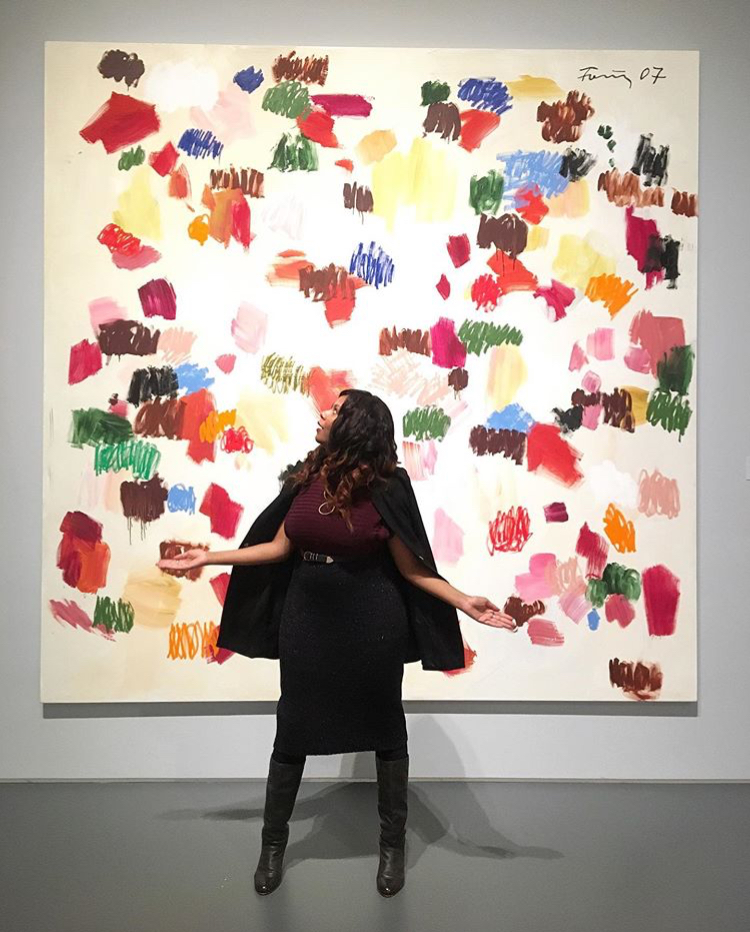
On Family and Inheriting the Arts:
“My mom’s family is originally from North Carolina and Florida. My grandmother moved to New York and worked in nightclubs, dancing as a chorus girl. She met my grandfather, who at the time was working in manufacturing for Coach. One day she went on a trip to Los Angeles, and said, ‘I’m not going back.’ She was ahead of her time, being a strong-minded woman. My grandmother was really inspired by the actress Lena Horne. When she came to LA she saw more possibilities, began to do background work in film, and also worked as Dorothy Dandridge’s (the first African-American to be nominated for the Academy Award for Best Actress) stand-in. She was in several movies and some TV shows, including classics Carmen Jones, Guys and Dolls, and Viva Las Vegas with Elvis. And because of that, I grew up watching a lot of classic films. I often wonder what more she would have done had the film industry been more inclusive.”
On Passion Meeting Purpose:
“I grew up with arts and culture as a powerful tool for storytelling. As a kid, I would read fairy tales and ask my mom for ones with lead characters who looked like me and the diversity that I saw in the world. I think that’s the origin story of my desire to see more inclusivity and representation in art forms. The arts have the power to open people’s eyes, educate, challenge, heal and allow people to travel the world, back and forth in time – simply with a photo, film, painting, or a piece of choreography and theater. Later, I became a double major in art history and media studies, focusing on the representation of race and gender in film and art history.
I went on to work in a range of spaces in the arts, including galleries, The Museum of Contemporary Art (MoCA) in Los Angeles, an artist residency program in Santa Monica, and arts PR firms. For a time, I focused on economic development initiatives for art, fashion, and interior design businesses. That was a special time for me because West Hollywood is a major hub within Los Angeles that epitomizes the intersection of arts and culture, including the music scene on Sunset Strip, the LGBTQ community, the Design Center.
I moved to New York after a quick stint hiatus in London and made a transition to fashion, working on global PR, events, and marketing for Moda Operandi. We once sponsored the Met Costume Institute exhibition – which was a dream project for a fashion-loving art historian; it made me reconnect with how much I love the arts.
Shortly after that, I received a message in my LinkedIn inbox about an opportunity at Sotheby’s. It’s been the most interesting experience working at an auction house, which I often describe as a museum on steroids. The access to countless magnificent works and paintings that most people don’t get to see more than once in a lifetime if they’re fortunate enough to see them at all and bringing to a broader audience using social media is an unparalleled experience. It’s incredible what we see coming through an auction house.”

Black Art at Sotheby’s:
“One of my most exciting moments at Sotheby’s was the sale of Jean-Michel Basquiat’s Untitled (1982), which set the auction record for a work by an American artist. I’ve been able to work on exhibitions that celebrated works by African-American artists, one of which Drake actually came in and did the sound curation. I also worked on the first-ever all-female artist auction at a major auction house, which Oprah Winfrey and Agnes Gund co-chaired. I was there when we sold a Georgia O’Keeffe, my favorite artist as a kid, that holds the auction record for work by a female artist. Sotheby’s holds several records for women, African-American, and African artists. As someone who studied race and gender in art, I really feel the significance of being in the room to see those historic moments.
Sotheby’s held an auction to benefit The Studio Museum of Harlem in 2018. Personally, I think Thelma Golden is absolutely amazing. Her work has a tremendous impact on the visibility of artists of African descent as well as young art professionals in need of inspiration. While working at MOCA, I remember seeing her in conversation with Lorna Simpson, and I just thought, “Look at these women. They’re incredible, and if they can be here doing these amazing things in this field, I can also contribute in these spaces.” Representation does really matter. So working on The Studio Museum auction felt kind of like a full-circle moment.”
On Building Community During the Pandemic:
“I am seeing more online and Zoom conversations around collecting Black art, art advisers hosting Clubhouse chats, excitement over magazine covers featuring work by Black artists, discussions about the new Black Art: In the Absence of Light documentary on HBO. I’ve made new connections and found interesting creatives on social media, including one via a post featuring ‘Something Good – Negro Kiss,’ a short film from 1898, is the earliest known on-screen kiss and depiction of intimacy between African Americans. I’ve always stood by social media as an opportunity to connect, educate, and share. I think people want to engage with compelling and meaningful content now more than ever.”

Black Artists on your Radar:
“I love portraiture and the works of artists who are focusing on large scale Black portraits, especially because it’s something that I didn’t really see until later in my life. The first Black artist that I encountered whose work kind of represented me was Barkley Hendricks. I immediately fell in love with the poetry in every aspect of his work. That led me to artists like Kerry James Marshall and Kehinde Wiley’s amazing large scale portraits.
The artists I’m thinking about the most right now are Amy Sherald, Jordan Casteel, and Toyin Ojih Odutola—all dynamic Black female artists who transport you into the specific worlds of the figures you’re looking at. Their work fully speaks to my desire to see representation and inclusivity in paintings.
There’s also Jessica Spence’s paintings that center on hairstyling, which are charmingly captivating. Hair is such an ongoing conversation for Black women. It’s a major part of our beauty regiment, how we are accepted, how we’re criticized, how we express ourselves. The textures, weaves, extensions, braids, wigs, there is some much artistry and skill in Black haircare and styling. It is a topic that is debated a lot, but deserves more of a celebration, the art of Black hairstyling. There’s intimacy in a mother braiding her daughter’s hair, or someone taking a toothbrush to lay their edges, and Spence’s paintings illustrate that beautifully.
Lastly, I have to mention Carrie Mae Weems’ Kitchen Table series, which iconically speaks to family. The series pulls you into an intimate portrait of everyday life. There’s Lorna Simpson, Njideka Akunyili Crosby, Bisa Butler, Mickalene Thomas, and artists who I discovered on Instagram, I could go on.”
On the Politics of Being a Black Woman:
“I voted for the first African-American president. I remember thinking, at the time, ‘I know nothing is perfect. This does not by any means mean that racism is over, but this is a big moment in history. And I am grateful to be contributing to this moment in history.’ The past 4 years have been rough emotionally, questioning my fellow Americans, questioning what it means to be American. What does it mean to be a Black person in this country? Why would we have that person in office? And I was just feeling honestly very disheartened and bleak about things, so being able to watch the inauguration with Kamala, the fact that we didn’t reelect that person, was a relief. Another historic moment, although, there is still so much work to be done.”
Destinee Ross-Sutton, Founder of Ross-Sutton Gallery
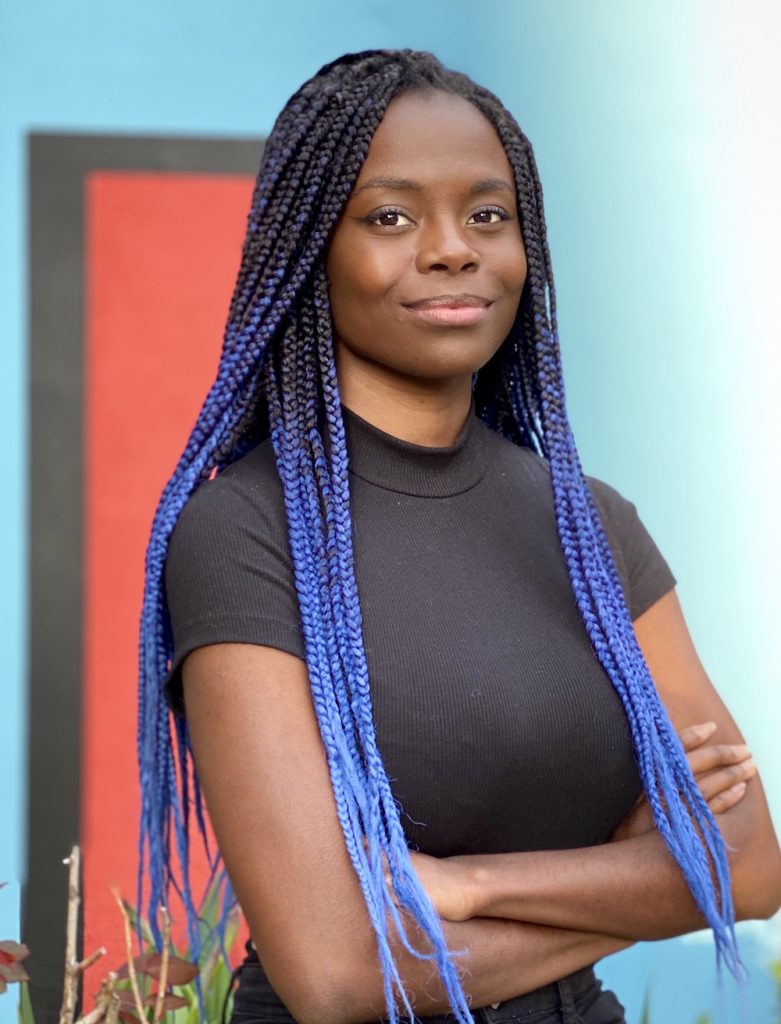
On the Family and Inheriting the Arts:
“Family is absolutely essential to me. My father is one of eleven children and you don’t hear that often anymore. He was born and raised in Harlem, but my family came up from Georgia in the 1920s, right around the Great Migration and Harlem Renaissance. My siblings and I are very close and my oldest sisters have children, who are practically siblings themselves. I try to get them to come in and enjoy the gallery space and, as much as they can, be surrounded by art. I invite them to exhibitions and, before the pandemic, I would pick them up from school and take them to a gallery opening or we’d go to a museum or something, and I do that because it was done for me and that was not common for most people I knew. Growing up in the late 90s to early 2000s, a Harlem hey-day, I was exposed to culture when for most, life outside your small neighborhood was not very accessible. I see it in myself and in my previous classmates and some friends who had similar experiences, how some of them were changed so fundamentally by just being exposed to other aspects of, or kinds of, lives. I have to pass that on and it’s something I want to do for the kids, but also for my sisters as well. I want them to be involved and in the loop as to what I’m doing with my life. I think it’s just so important.”
On Personal Creative Influences:
“I went to Montessori and Waldorf schools growing up that focused heavily on exploratory learning, and around people whose parents were very academically inclined, but that wasn’t so much the case of my family. My father went to Vietnam right out of high school, enlisted in the military. For a while my mother was into dance, but she ultimately built quite a long career working with the Parks Department for the City of New York. My parents didn’t have it easy. They both share an absolute love of music and that, for me, has been an instrument in learning about history, black history especially. As a family, we’d watch documentaries about Martin Luther King and other greats, listen to jazz, read Maya Angelou and different things. Sometimes, this study was also encouraged in school, but I was always aware it was something to be proud of: who we are. And that’s the foundation of how I grew up learning about important historical figures within the black community and, ultimately, in art.”

On Making Art Accessible for All:
“I like to point out that there are so many types of art, and combinations too, sometimes things you wouldn’t immediately associate or, for example, art that is lyrically or musically influenced. There’s so much more to it than paintings on a canvas, and it can be a lot more immersive than viewing those paintings in a room of white walls.
It’s been really interesting getting to that point where I can see the gaps between generations, and also see people trying to relate. That’s one part that’s very fulfilling for me, just being able to sit down and say: here’s how it is, let me know if you have any questions. And young people are very open because it’s like, ‘finally some one’s treating me like I’m not a child,’ when they have these questions they’re afraid to ask, you know? You’ll never know if you don’t ask.
It’s important to make an effort to reach out to other kinds of people because you begin to realize that with traditions and ideas – whether it’s food, music, dance – we all have these threads that connect us and that should be explored and it should be honored. That’s a large basis of why I’m so passionate about art because artists, at their best, just really get down to exploring the human condition and people from wherever can look at it and talk about it and feel something within it.”
On Passion Meeting Purpose:
“When I was young, I kind of jumped all over the place and really wanted to figure out what my passion was, from singing in choirs and playing instruments in school, to culinary arts in high school, and later becoming a journalism major in college. I realized I wasn’t wanting to be a part of a workforce per se, but working out of passion, and what I do with the platform that I have, that matters to me.
Around 2016, coming out of school, I was descending into a kind of hopelessness wondering, ‘Is this what my career is going to be, trying to get the truth out there and being attacked for it? Or a boss forcing me to write things that I just have to comply with, versus what should be written about, because I need to make a paycheck?’ I was also taking photography classes, studying different artists and how a studio is run, and then I volunteered at MoCADA in Brooklyn where, luckily enough, once I started giving my opinion, it was actually heard and respected. I was able to connect with the artists in a way that honestly made me so happy and all of it happened organically from there. I just decided to pivot and meeting with artists and collectors and the people around me at the time kind of built up my business to what it is today.”
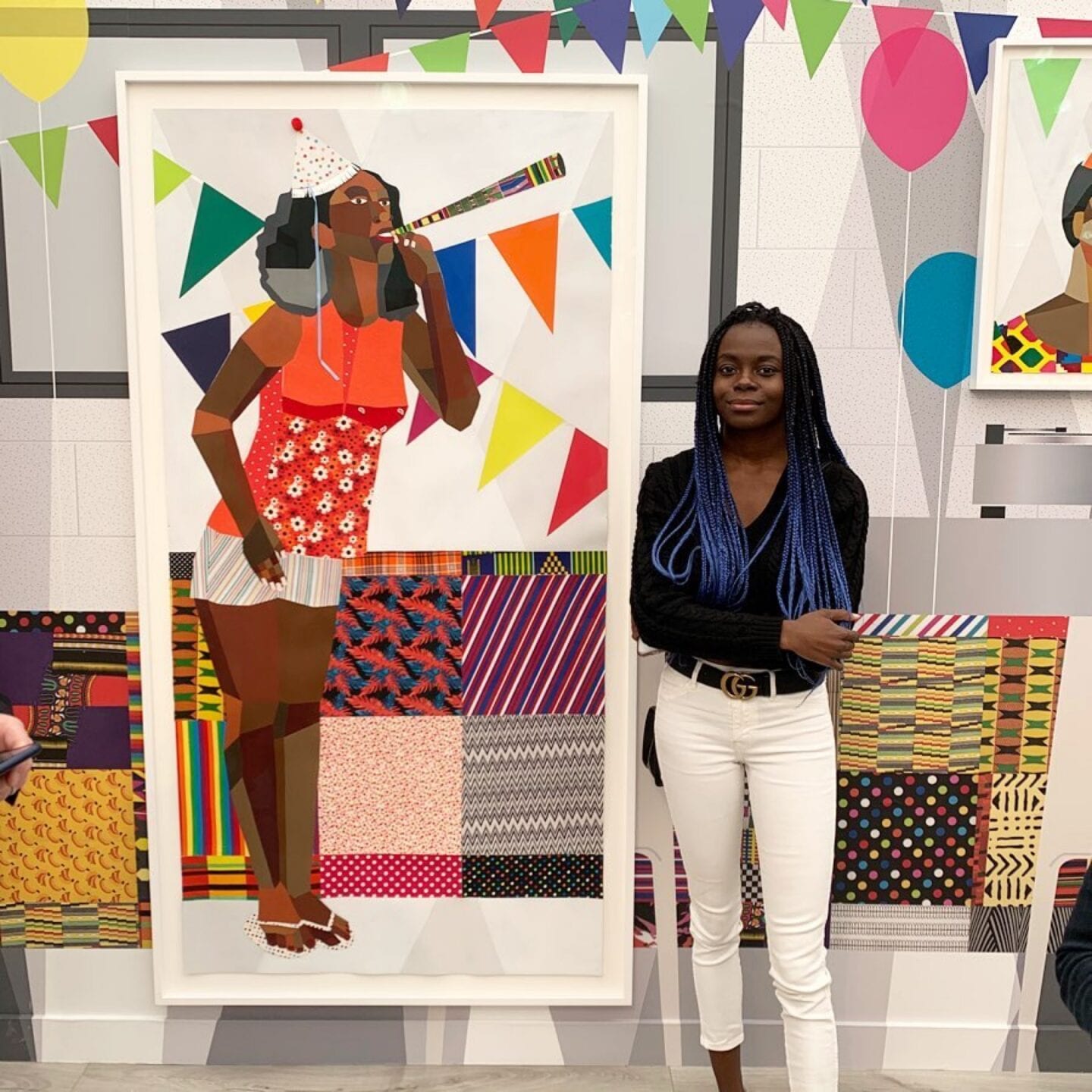
On Building Community in the Midst of the Pandemic:
“Opening the space in the middle of the pandemic has been a bit of everything, both amazing and absolute chaos. Sometimes I’ve got the power drill and I’m handling business, and others I experience imposter syndrome, thinking: ‘why me?’ Then I remember I’m just trying to do a little bit of good in this world and, in a year that’s just been such a struggle, having people approach me being so willing and open to help and contribute in any way that they can is really the amazing part. There are moments when you’re just so tired and you start to also ask yourself, ‘why am I doing this,’ but then I see people come in and I literally watch the tension in their shoulders drop away as they get lost in the works. The gratitude I and the artists feel in being able to have that effect on people and bring this all together is beyond. And you know what, it just makes me think, ‘black women are tireless.’”
The Politics of Being a Black Woman:
“At work, I often find I’m one of the youngest people in the room, and I also realize that a lot of my friends I’ve grown up with have become radical types, although that’s been kind of turned into a negative word, but I don’t necessarily see it that way. I would say putting Biden into office is taking a step back from the edge of a cliff, and that doesn’t mean that we’re back where we need to be. It means that we need to keep taking those steps back. It means we need to hold everyone accountable for how our actions affect each other.
The past few years have just been very eye opening, but at the same time, I had people come into the gallery on January 6th saying, ‘I can’t deal with what’s going on. I’m going to turn off my phone and I’m just going to enjoy this,’ finding that they found that space to do so. That particular day and the days following it made it just feel amazing because there are so many scary things going on and there’s so many hateful, terrified people in the world, and to think that my occupation of this space, for however brief a moment, was able to help some individuals with that fear, to me, that that is why I’m here. I just want to bring a little bit of peace where there’s so much chaos.
My mother would always tell me: for whatever comes, make sure you’re prepared. Be open to the world, but make sure you’re ready to protect yourself because, especially for Black women, the world is just dark and cruel sometimes. And doing for yourself, as opposed to doing for others, is more than okay in a world where we’re expected to give so much of ourselves, that we have the right to demand more for ourselves, and not be seen as asking for too much, greedy, ungrateful, or made to feel that we’re not good enough to deserve these things. She helped me realize you should do what you can for yourself, and from that you are, you’ll be able to help others.”

Black Artists on Your Radar:
“One name that’s getting quite a bit of buzz is Raphael Adjetey Adjei Mayne because of his depiction of Amanda Gorman, and his work does a lot of exploration of family in relation to the next generation, raising the child, and portrays expressions of love and, in some moments, intimacy, happiness within the parental unit as well as happiness that the child brings, which really is just very important, especially to me. I hang out with my nieces and nephews and I can just forget about my problems for the day. Sometimes worrying about who spilled juice on the floor is the biggest thing. They help me live in the moment for a while, which is most possible in youth, just getting to know the world around you, being curious and having fun.
I would definitely say Nelson Makamo as well, for his portrayal of children. In a similar personal vein, his work comes from seeing hopelessness and helplessness in many African countries and he’s showing the child as a beacon of hope, potential, and possibility, in an effort to combat those rather negative and frankly patronizing views of the African population that really is just minimized to one stereotype way too often.
Lastly I would say, Khari Turner. Not only is his work absolutely beautiful in an aesthetic sense, but when you learn about the materials that he uses, even how he gathers water from different sources all over the world, and of course the ambiguity of the figure… to me, it’s just an amazing representation of a semi-abstract expression of, really, just beauty.”


